English tea artifacts trace the culture’s long history with the beverage and its accessories
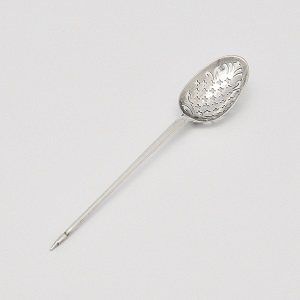
Formal tea traditions are considered quintessentially English. Yet today, it’s mainly museums, tea rooms and historic homes that offer the traditional tea-drinking experience along with all the associated artifacts.
Ironically, what is now most unique about tea drinking in England is how distanced from that history the current habits are. The English, says author and tea historian Jane Pettigrew, “have forgotten a lot of the importance, significance, and history of our tea drinking habits.”
While the elegant afternoon tea rituals of previous generations are enthusiastically observed by visitors and citizens alike for special occasions, current daily rituals tend to be more prosaic, consisting of chunky mugs and paper teabags laments Pettigrew. Nevertheless, there has been a resurgence in interest in more traditional tea rituals and equipage in recent years.
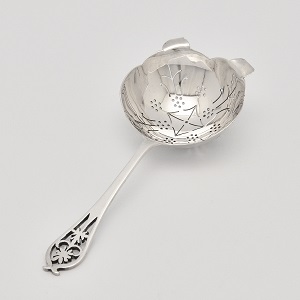
Traditional English tea practices were initially influenced by Chinese rituals, according to Pettigrew, particularly with the use of tea things at the table and the custom of one person taking charge to brew and serve tea to guests. This formality was adapted to English ways of eating and drinking.
Tea was not always a central part of English culture. Initially there was a deep suspicion of the beverage, but that started to change in the early 19th century when consumption increased dramatically. England helped the spread of tea from China to India when the British started growing tea in Assam after discovering tea plants were suited to that region. This gave the English the ability to cultivate tea for consumption at home, says Pettigrew.
Today, tea drinking is firmly planted in English social and cultural history, and sites all over the country provide charming and informative insight into the traditions of past generations. Pettigrew’s personal list of can’t-miss tea-related sites in England includes a 3,000-strong collection of British teapots at the Norwich Castle Museum; the Georgian mansion Saltram House in Devon; and Woburn Abbey, the home of Anna Maria, the 7th Duchess of Bedford, who is credited with popularizing afternoon tea in the 1840s.
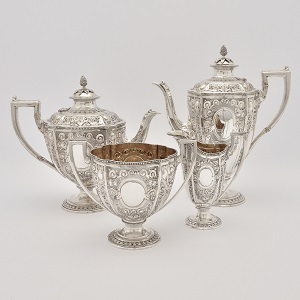
Another historic site, The London Silver Vaults, offers a unique look at tea traditions through the associated equipage. Founded in 1876 as the Chancery Lane Safe Deposit, The London Silver Vaults are just that: vaults where wealthy Londoners stored their valuable personal effects, which included silver tea sets. In addition to rented storage rooms (or strong rooms) where Londoners stored valuable personal belongings, businesses also used the strong rooms, and these included silver dealers and shops that needed secure premises to protect their valuable wares.
Today, much as the secure vaults drew wealthy Londoners and businesses in the 19th century, the secure location continues to provide a safe place to both store and shop for valuable goods. The original building was bomb-damaged during World War II and later rebuilt as retail units at the request of the silver dealers who had rented space there previously. The current iteration of the Silver Vaults, which houses 30 specialist shops, owes its existence to the popularity of silver tea services with American service men after World War II looking for gifts to bring home for their mothers. The money the men spent enabled builders to get a permit for the steel required to rebuild the war-damaged building above the vaults, according to Elizabeth Simpson of William Walter Antiques in the Silver Vaults.
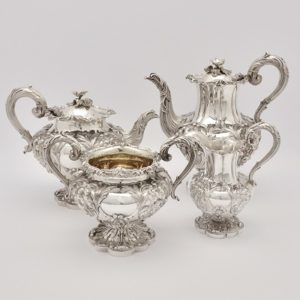
The site houses modern silversmiths and jewelry artisans alongside shops featuring silver from every major design era. The current collection of silver is the largest found anywhere in the world, according to representatives, and it is the only trading vault. The London Silver Vaults provided much of the silver for the popular BBC period drama Downton Abbey and has hosted cast events and informative talks.
“The whole history of tea is here [at The London Silver Vaults], including all of the articles used for tea,” says Eric Franks, proprietor of I.Franks, which occupies Vault 9. The valuable objects associated with tea have changed enormously over the years, he says, explaining that tea was very expensive when it was first introduced, and so “the ritual of drinking tea was an elaborate and important occasion. It was a sign of one’s wealth and importance. Having a large silver tea set or teapot was a way of stating how rich or important one was.”
The London Silver Vaults shops showcase the evolving traditions and objects associated with tea drinking in England, with silver items from almost every design period, starting as far back as the 16th century right up to the modern era. There are tea services and utensils from the Queen Anne, Georgian, Regency, Victorian, Edwardian, Art Deco, and Modern periods, all under the same roof.
In the Georgian era, silver tea caddies were made with locks on them because tea was considered so valuable, says Simpson. During the 17th century, tea was expensive, costing 40 shillings per pound in 1664. The price was even higher when heavily taxed during the 18th century.
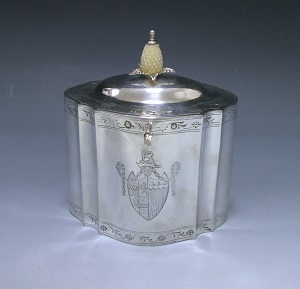
(Left) A Beautiful Antique Silver George III Tea Caddy of serpentine shape with fine bright- cut engraving. The front of the caddy is finely engraved with the armorials pertaining to the Percy Family (Dukes of Northumberland). The hinged lid is surmounted with an original ivory in the shape of a pineapple with splayed leaves. Height 6 inches 15.2 cm, base 5.25 x 3.75 inches 12.8 cm x 9.7 cm. Weight 11 troy oz.
The word “caddy” was derived from the Malaysian work “kati”, meaning approximately one and one fifth’s of a pound in weight. The cost of tea during the seventieth century was high, forty shillings per pound in 1664 but much higher in price when heavily taxed in the eighteenth century; that is why a lot of the caddies made between 1760-1810 are fitted with a lock and key.
The Silver Vaults have a large selection of tea sets and four-piece tea services dating from the 19th and 20th centuries, as well as good examples from the 18th century, says Steven Stodel of S & J Stodel, another current Silver Vaults proprietor. Tea was first bought in London in the 1690s, he explains, and the components used to make the tea were sold individually. Silver tea sets were not produced until the second half of the 18th century.
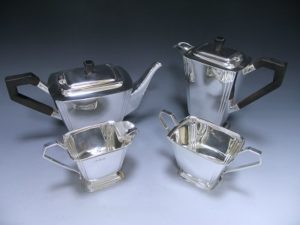
“Various styles of tea sets have evolved from the well-known early half fluted Queen Anne style (actually misnamed because tea sets were not made during her reign) to the elaborate Victorian cut shaped examples and the Gothic pattern of the 1860s,” says Stodel. “Many tea sets produced in the 20th century were in the style referred to as Edwardian. There are also some very eye-catching examples of silver found from the Art Deco period at the vaults. In the early 19th century, when travelers and tea merchants began to visit China, the idea of a complete tea service meant they were produced in Canton, Shanghai, or Hong Kong.” Many Chinese exported silver tea sets can be found at The London Silver Vaults.
Victorian-era tea sets are some of the most elaborate. During that era, one’s best tea set was a sign of wealth and influence, and the ritual of visiting friends and acquaintances in their homes to share tea together were almost as elaborate as the tea sets themselves. Victorian afternoon tea occurred halfway between the midday meal and dinner, and guests would enjoy polite conversation with their host or hostess.
“That’s when tea sets really started to become elaborate,” says Barry Carroll of David S Shure & Co, located at Vault 1 in the Silver Vaults. “They were important signs of social standing. A large silver kettle would be on display, and these had burners in them to keep the tea warm. England was a global power in the Victorian times, London was very wealthy, and tea was in demand. The first tea clippings were brought back in boats, hence the term ‘clipper boats’, which would actually race back to England.”
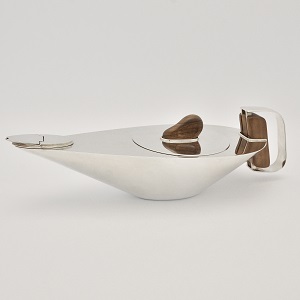
Because of its long connection with tea equipage, The London Silver Vaults has held several tea-related exhibitions showing its importance as part of London life. Recently, it partnered with the London museum Dr. Johnson’s House. Dr. Samuel Johnson, the writer of the first English dictionary, was known for being both a bit eccentric and an avid drinker and promoter of tea, well before it was ingrained as a cultural tradition in the city. Johnson is said to have drunk tea every day and, according to lore, he once drank 25 cups in a single sitting. After publishing his dictionary in 1755, the first item he bought for himself was a silver teapot.
For more on antiquities subscribe to Tea Journey Magazine today.
Tea Market
Get More Value from Your Tea: BRU Maker One
+41794574278
Jacque's Organics
(647) 804-7263